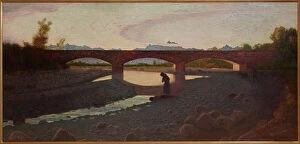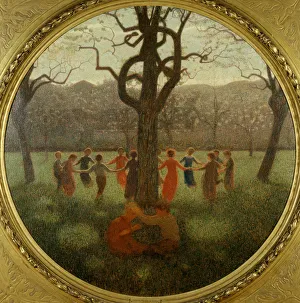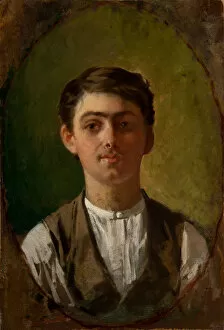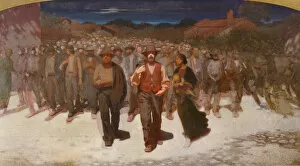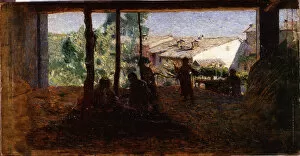Giuseppe 1868 1907 Collection
Giuseppe Pellizza da Volpedo (1868-1907) was an Italian painter known for his captivating artworks that captured the essence of life and nature
All Professionally Made to Order for Quick Shipping
Giuseppe Pellizza da Volpedo (1868-1907) was an Italian painter known for his captivating artworks that captured the essence of life and nature. His self-portrait from 1885-1886 showcases his talent and introspective nature, while "Old mill in Volpedo" painted in 1903 transports us to a bygone era. In "Ring Around the Rosie" created between 1906-1907, Pellizza da Volpedo explores the innocence and joy of childhood. Meanwhile, "The snow" from 1906 captures the serene beauty of winter landscapes, evoking a sense of tranquility. Pellizza da Volpedo's fascination with light is evident in "Sunset (Burning bush)" painted between 1900-1902. The vibrant colors and dramatic sky create a mesmerizing scene that captivates viewers. Nature plays a prominent role in many of Pellizza da Volpedo's works. In "Trees and clouds at Villa Borghese" painted in 1906, he skillfully depicts the interplay between trees and clouds, showcasing his ability to capture atmospheric conditions. One of his most famous paintings is "Stream of people (La Fiumana)" created during 1895-1896. This masterpiece portrays a crowd moving together as one entity, symbolizing unity within society. Other notable works include "May morning" from 1903 which exudes freshness and vitality associated with springtime. Additionally, Christian themes are explored through paintings like "Christian Charity, " reflecting Pellizza da Volpedo's spiritual beliefs. However, not all his works depict idyllic scenes; some delve into darker subjects such as suffering or loss. Paintings like "Membra stanche, " meaning tired limbs, evoke feelings of exhaustion or weariness experienced by individuals facing hardships. "The Dead Child (Il morticino)" is another poignant piece that confronts mortality head-on, inviting viewers to reflect on the fragility of life.

